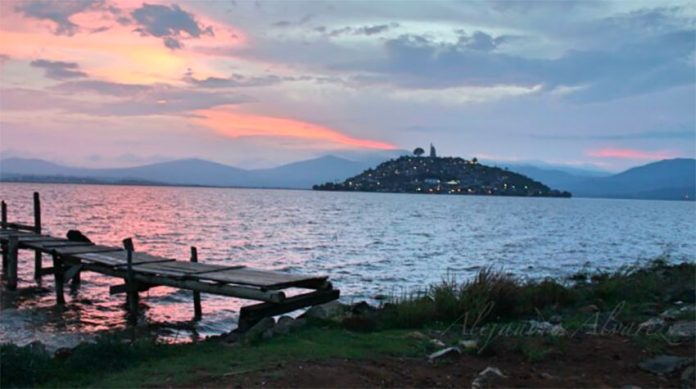Four Michoacán municipalities are working together to restore Lake Pátzcuaro to its former splendor, says Pátzcuaro Mayor Víctor Manuel Báez Ceja.
In an interview with the newspaper El Universal, Báez said that the municipalities that surround the lake – Pátzcuaro, Erongarícuaro, Quiroga and Tzintzuntzan – are collaborating on a comprehensive restoration plan for the body of water, which is polluted and has below-optimal water levels.
“We don’t have the economic capacity to do the work alone, that’s why our plan is to do things in a team,” the mayor said, adding that the federal and state governments and environmental organizations will also contribute to the cleanup efforts.
“. . .Lake Pátzcuaro can be saved and that’s why a range of joint actions are being carried out in favor of the environment. . .” Báez said.
He added that it is likely that the federal government’s tree-planting employment program, Sembrando Vida (Sowing Life), will extend to the Lake Pátzcuaro basin in coming months. The program would benefit 10,000 hectares of land and contribute to a “comprehensive recovery of the whole lake,” Báez said.

Asked to identify the challenges faced by authorities to restore the lake, the mayor cited “excessive logging” that was carried out for several years as one of the biggest problems.
As a result large amounts of sediment flow into the lake when it rains, Báez said, adding that the body of water is not as deep as it once was because “earth, trash [and] plastic bags” have all found their way into it.
Water lilies are also a “very big problem,” he said.
Turning to the specific efforts of the Pátzcuaro municipal council, Báez said that a range of infrastructure projects have been completed in the last four years that benefit the health of both residents and the lake.
“For example, a project was carried out in the entire historic center to renovate and restore all the drains that were obsolete. It was a health issue because sewage mixed with rainwater,” he said.
“. . . Furthermore, to avoid the pollution of the lake, we’ve been building sewers in the entire municipality. . .” Báez added.
The mayor also highlighted that Pátzcuaro was the first municipality in Michoacán and the first of Mexico’s “magical towns” — as a select group of historical/cultural tourism destinations are designated — to ban single-use plastic products such as bags and straws.
Asked to outline the goals of the lake restoration plan, Báez responded:
“If the lake recovers its splendor, we’ll have more visitors, the craftspeople will make bigger profits, the islands will have greater development and those who emigrated will want to come back.”
The mayor added that a cleaner lake would allow the reintroduction of the achoque, or Lake Pátzcuaro salamander, and whitefish, both of which are currently bred in captivity.
“We live in a privileged land, we want to share it by promoting sustainable tourism. . .” Báez concluded.
Source: El Universal (sp)
